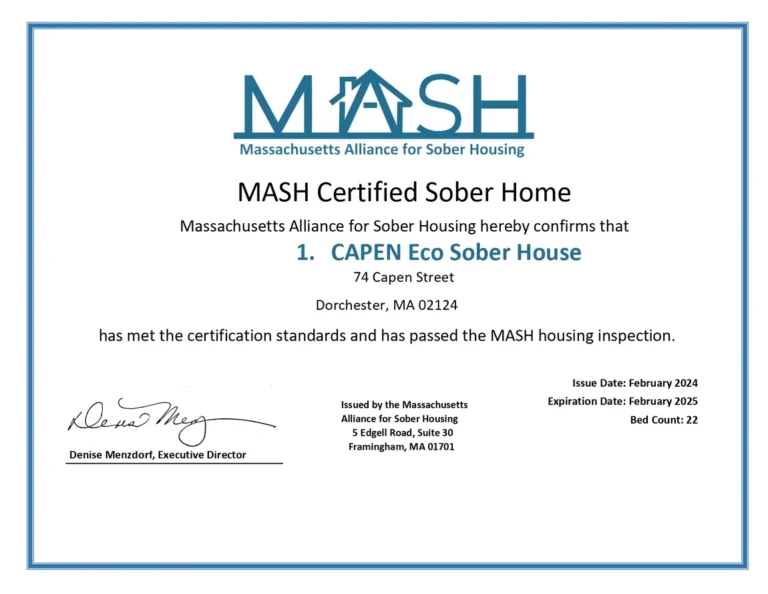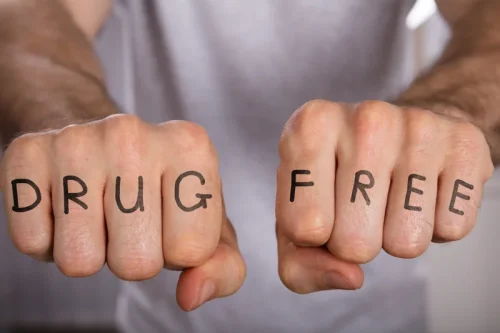
It occurs when the client perceives no intermediary step between a lapse and relapse i.e. since they have violated the rule of abstinence, “they may get most out” of the lapse5. People who attribute the lapse to their own personal failure are likely to experience guilt and negative emotions that can, in turn, lead to increased drinking as a further attempt to avoid or escape the feelings of guilt or failure7. The AVE was introduced into the substance abuse literature within the context of https://ecosoberhouse.com/ the “relapse process” (Marlatt & Gordon, 1985, p. 37). Relapse has been variously defined, depending on theoretical orientation, treatment goals, cultural context, and target substance (Miller, 1996; White, 2007). It is, however, most commonly used to refer to a resumption of substance-use behavior after a period of abstinence from substances (Miller, 1996). The term relapse may be used to describe a prolonged return to substance use, whereas lapsemay be used to describe discrete,…
4. Current status of nonabstinence SUD treatment
For instance, twelve-month relapse rates following alcohol or tobacco cessation attempts generally range from 80-95% [1,4] and evidence suggests comparable relapse trajectories across various classes of substance use [1,5,6]. Preventing relapse or minimizing its extent is therefore a prerequisite for any attempt to facilitate successful, long-term changes in addictive behaviors. The abstinence violation effect (AVE) highlights the abstinence violation effect distinction between a lapse and relapse. Put simply, the AVE occurs when a client perceives no intermediary step between a lapse and a relapse. For example, overeaters may have an AVE when they express to themselves, “one slice of cheesecake is a lapse, so I may as well go all-out, and have the rest of the cheesecake.” That is, since they have violated the rule of abstinence, they “may as well” get the most out of the lapse.
- She supports individuals who long for a better relationship with alcohol, helping them learn to drink less without living less.
- Findings indicated nonlinear relationships between SE and urges, such that momentary SE decreased linearly as urges increased but dropped abruptly as urges peaked.
- A key contribution of the reformulated relapse model is to highlight the need for non-traditional assessment and analytic approaches to better understand relapse.
4. Consequences of abstinence-only treatment

We summarize historical factors relevant to non-abstinence treatment development to illuminate reasons these approaches are understudied. The AVE describes the negative emotional response that often accompanies a failure to maintain abstinence from drugs or alcohol. The following section reviews selected empirical findings that support or coincide with tenets of the RP model. Because the scope of this literature precludes an exhaustive review, we highlight select findings that are relevant to the main tenets of the RP model, in particular those that coincide with predictions of the reformulated model of relapse. Ivori Zvorsky is an undergraduate student obtaining her major in psychology at the University of Richmond, USA.
Definitions of relapse and relapse prevention
Additionally, while early studies of SUD treatment used abstinence as the single measure of treatment effectiveness, by the late 1980s and early 1990s researchers were increasingly incorporating psychosocial, health, and quality of life measures (Miller, 1994). One critical goal will be to integrate empirically supported substance use interventions in the context of continuing care models of treatment delivery, which in many cases requires adapting existing treatments to facilitate sustained delivery [140]. Given its focus on long-term maintenance of treatment gains, RP is a behavioral intervention that is particularly well suited for implementation in continuing care contexts.

These groups tend to include individuals who use a range of substances and who endorse a range of goals, including reducing substance use and/or substance-related harms, controlled/moderate use, and abstinence (Little, 2006). Additionally, some groups target individuals with co-occurring psychiatric disorders (Little, Hodari, Lavender, & Berg, 2008). Important features common to these groups include low program barriers (e.g., drop-in groups, few rules) and inclusiveness of clients with difficult presentations (Little & Franskoviak, 2010). Harm reduction may also be well-suited for people with high-risk drug use and severe, treatment-resistant SUDs (Finney & Moos, 2006; Ivsins, Pauly, Brown, & Evans, 2019).
- A focus on abstinence is pervasive in SUD treatment, defining success in both research and practice, and punitive measures are often imposed on those who do not abstain.
- This suggests that individuals with non-abstinence goals are retained as well as, if not better than, those working toward abstinence, though additional research is needed to confirm these results and examine the effect of goal-matching on retention.
- Harm reduction may also be well-suited for people with high-risk drug use and severe, treatment-resistant SUDs (Finney & Moos, 2006; Ivsins, Pauly, Brown, & Evans, 2019).
- Abstinence rates became the primary outcome for determining SUD treatment effectiveness (Finney, Moyer, & Swearingen, 2003; Kiluk, Fitzmaurice, Strain, & Weiss, 2019; Miller, 1994; Volkow, 2020), a standard which persisted well into the 1990s (Finney et al., 2003).
- This concurs not only with clinical observations, but also with contemporary learning models stipulating that recently modified behavior is inherently unstable and easily swayed by context [32].
In one of the first studies to examine this effect, Herman and Mack experimentally violated the diets of dieters by requiring them to drink a milkshake, a high-calorie food, as part of a supposed taste perception study [27]. Although non-dieters ate less after consuming the milkshakes, presumably because they were full, dieters paradoxically ate more after having the milkshake (Figure 1a). This disinhibition of dietary restraint has been replicated numerous times [20,28] and demonstrates that dieters often eat a great deal after they perceive their diets to be broken. It is currently not clear, however, how a small indulgence, which itself might not be problematic, escalates into a full-blown binge [29]. A high-risk situation is defined as a circumstance in which an individual’s attempt to refrain from a particular behaviour is threatened. While analysing high-risk situations the client is asked to generate a list of situations that are low-risk, and to determine what aspects of those situations differentiate them from the high-risk situations.

Financial support and sponsorship



Leave a Reply